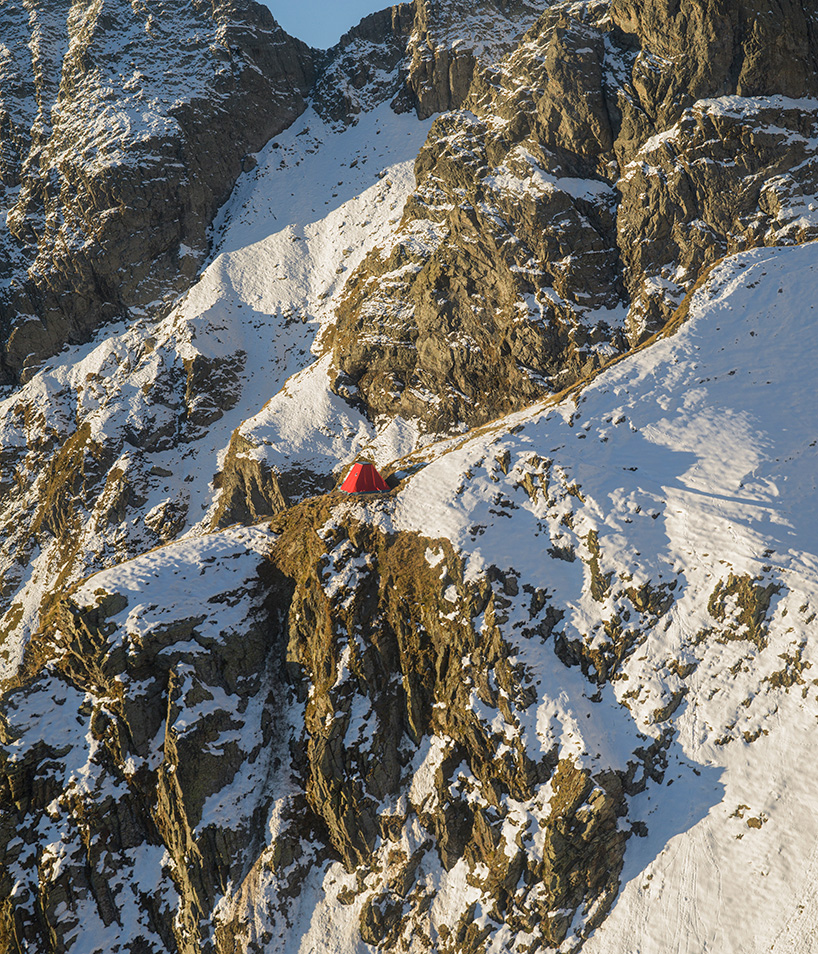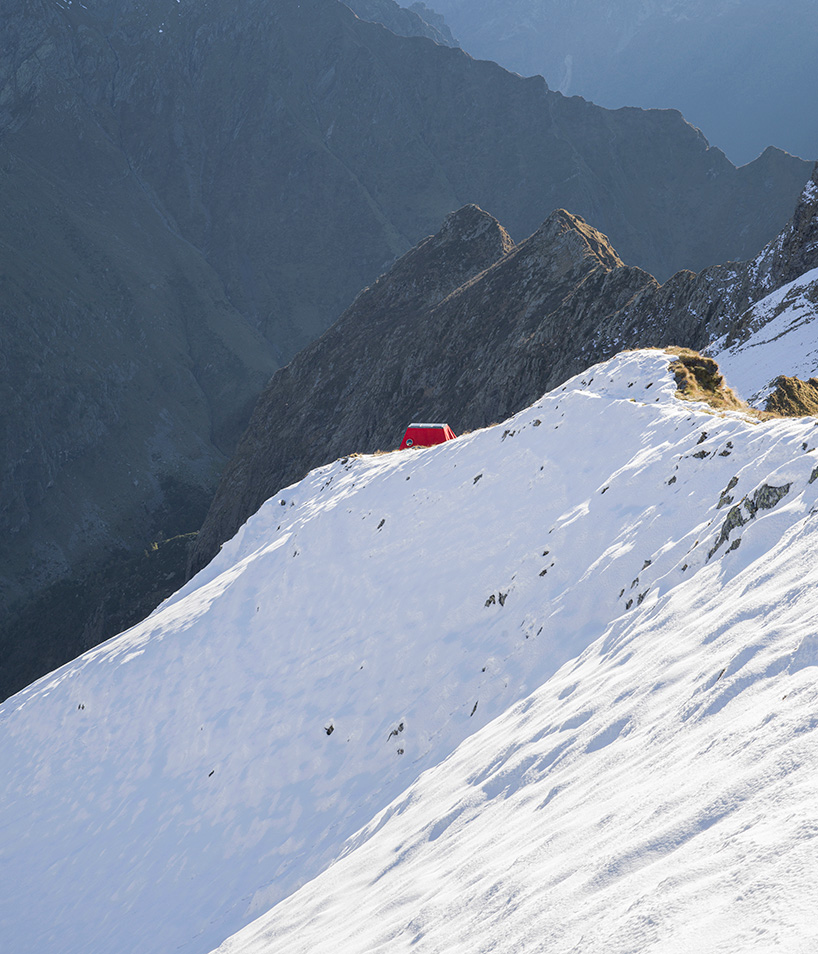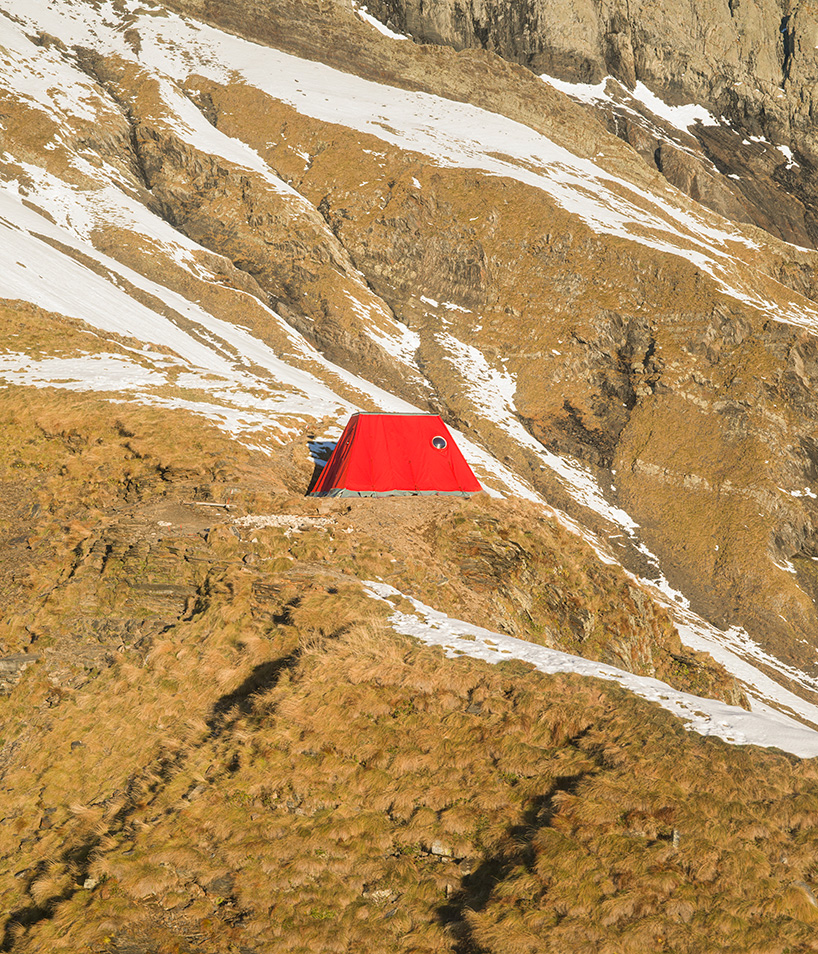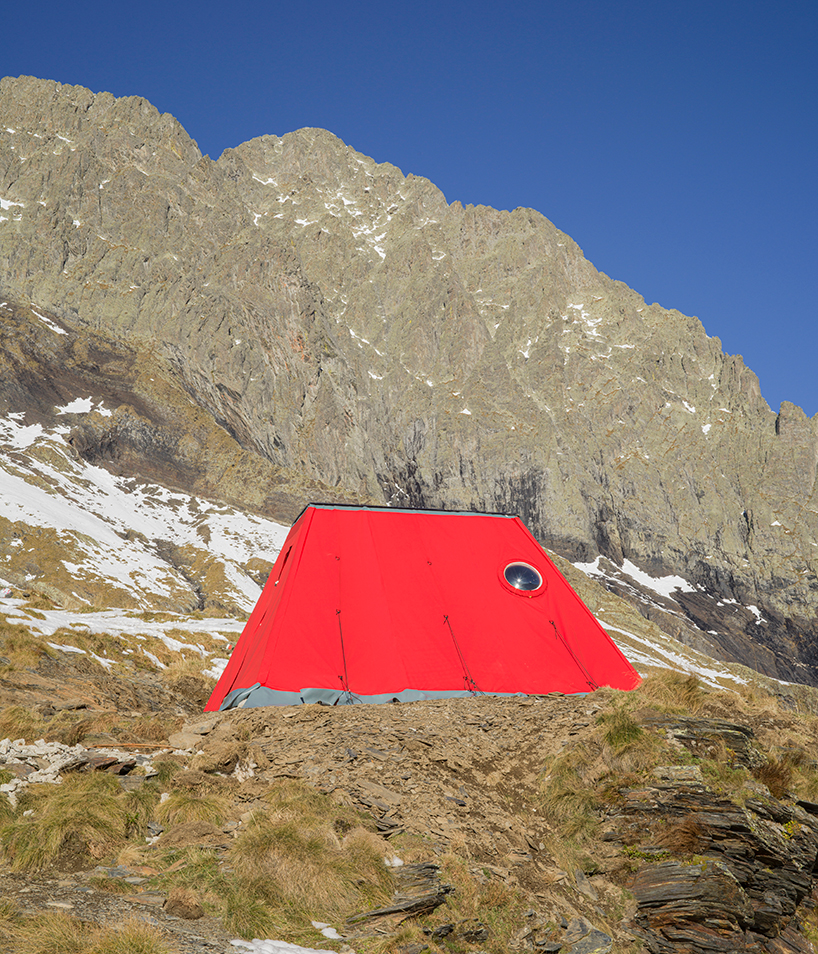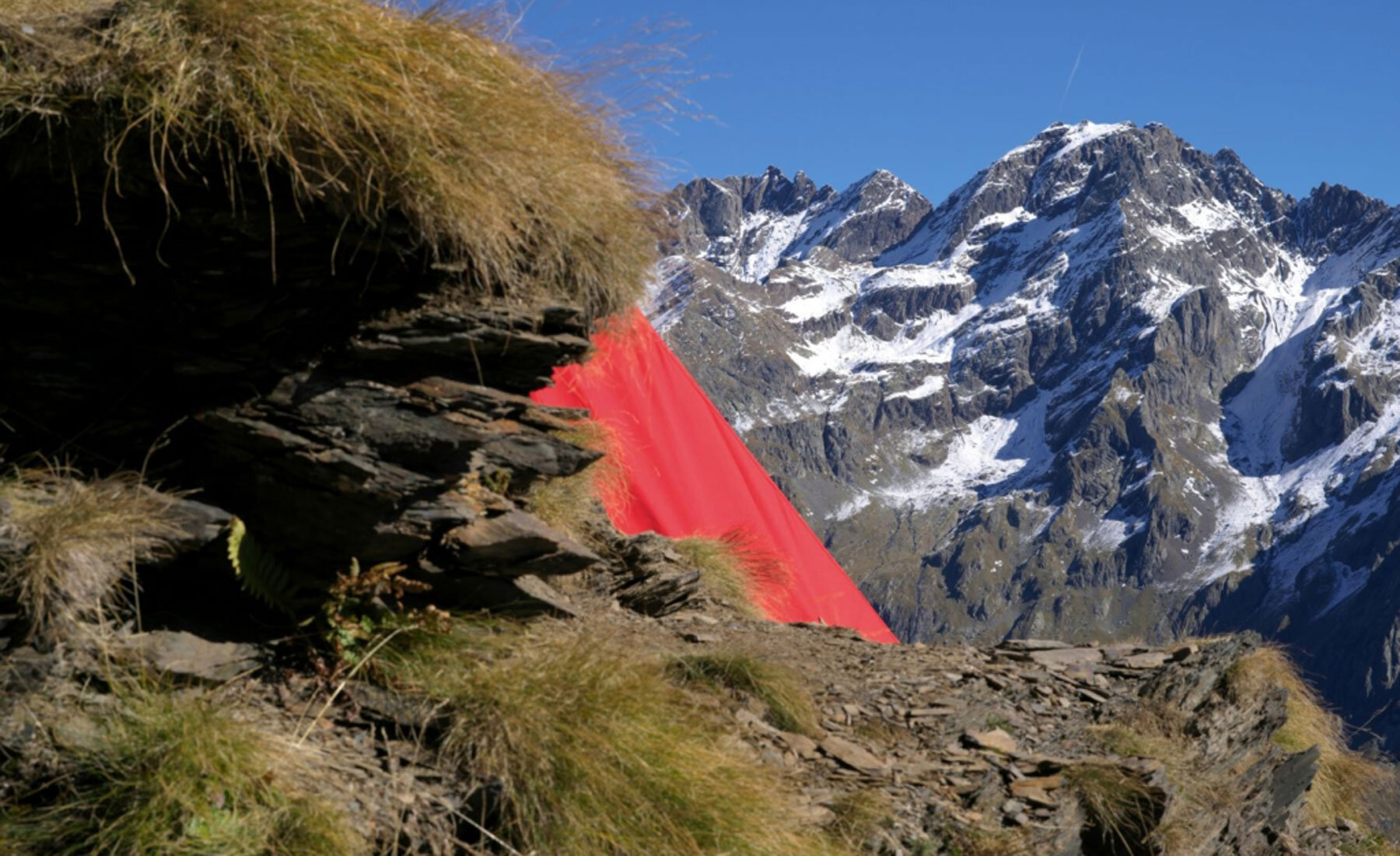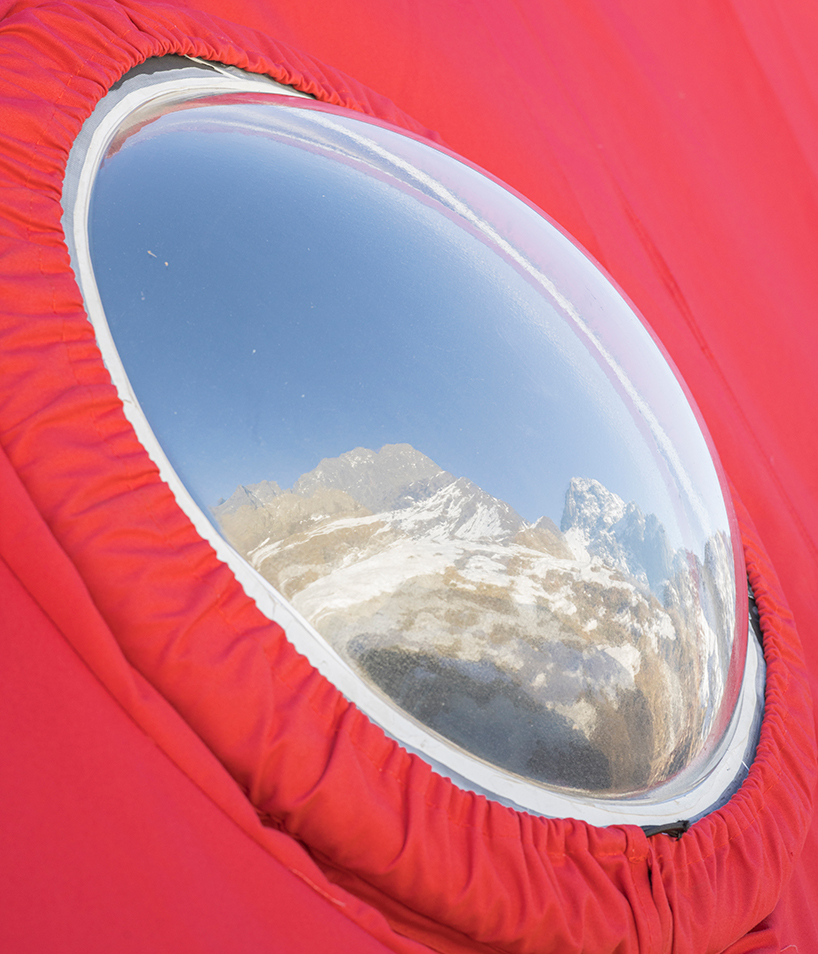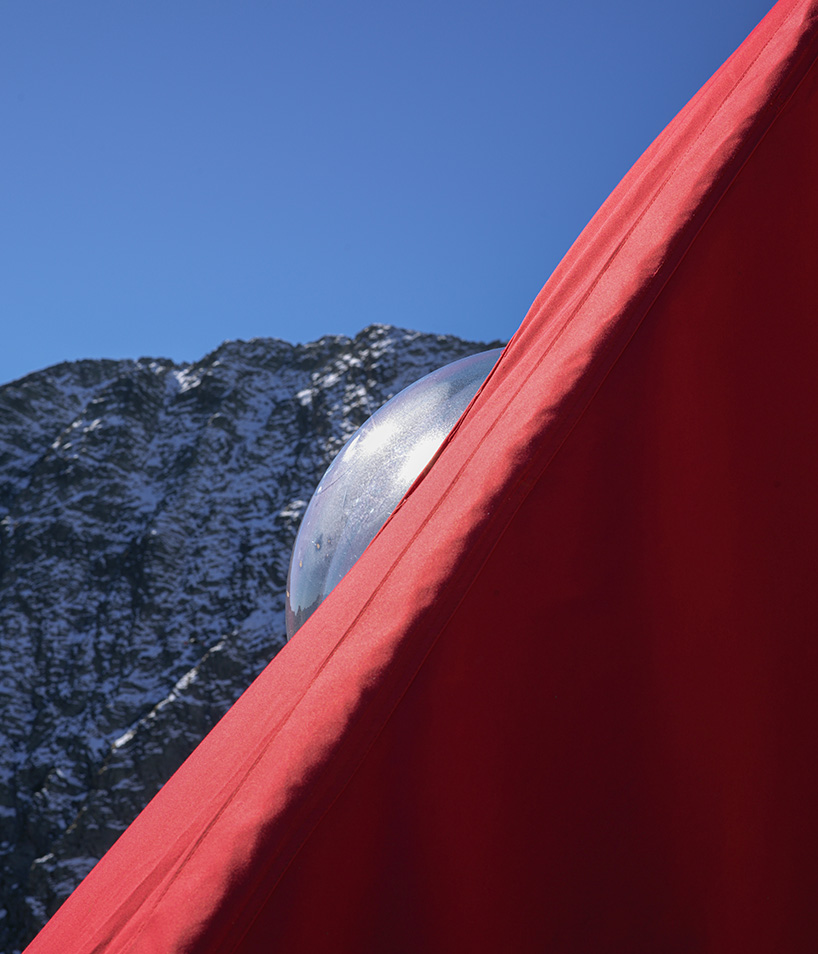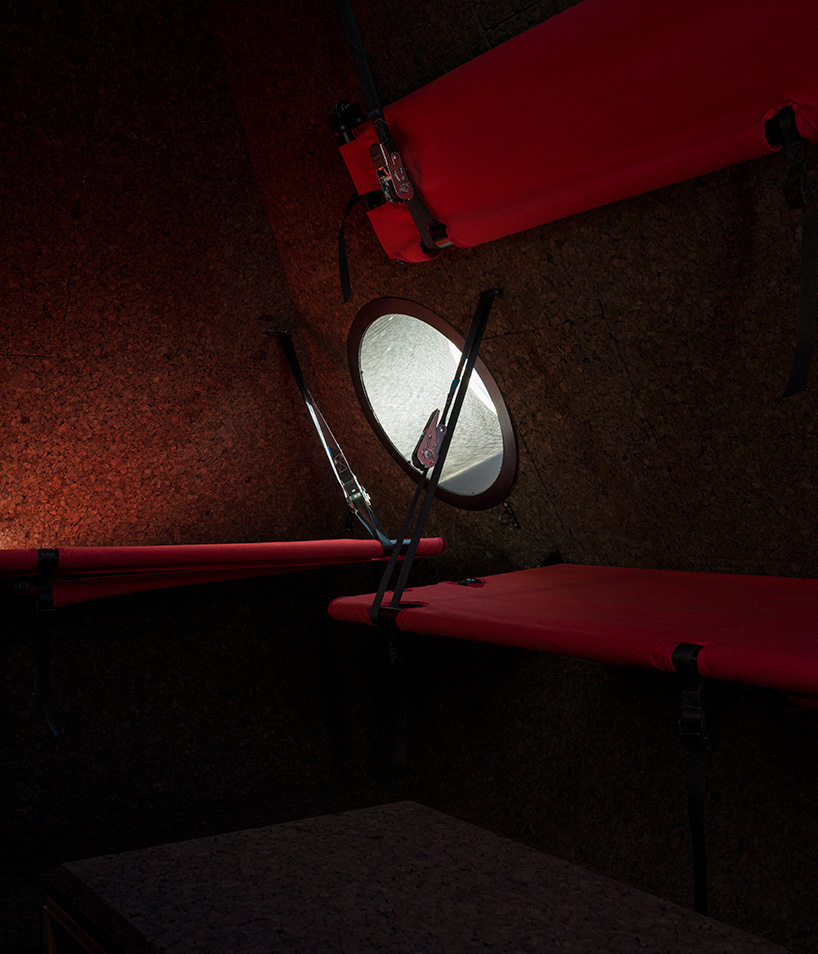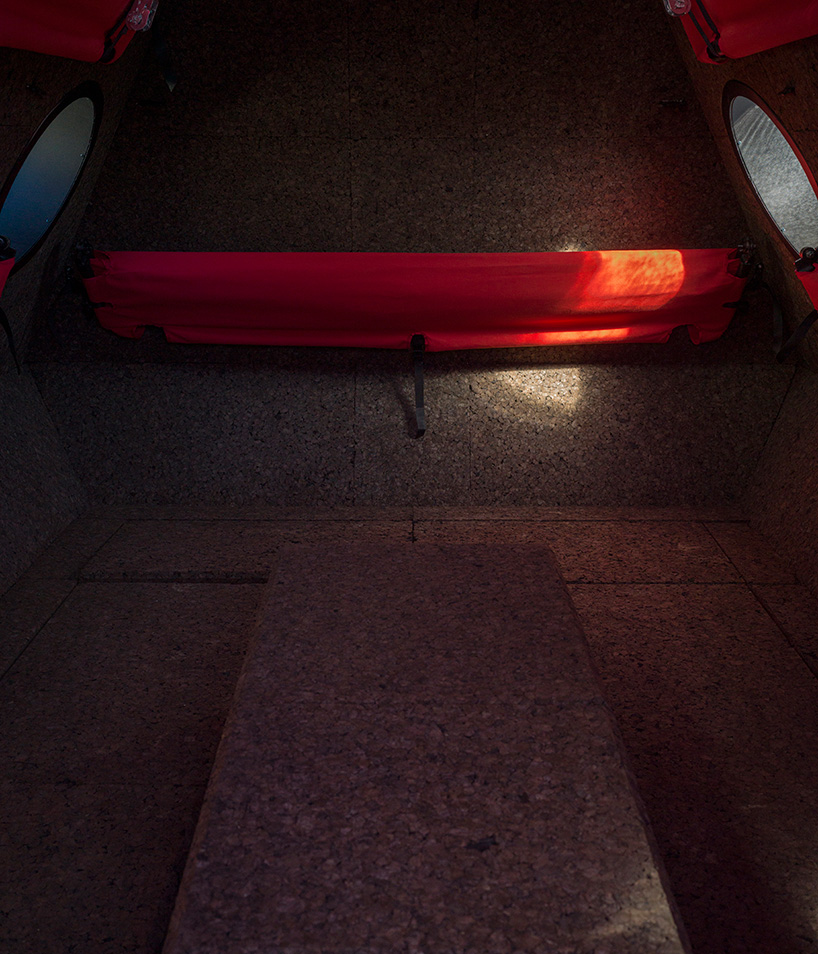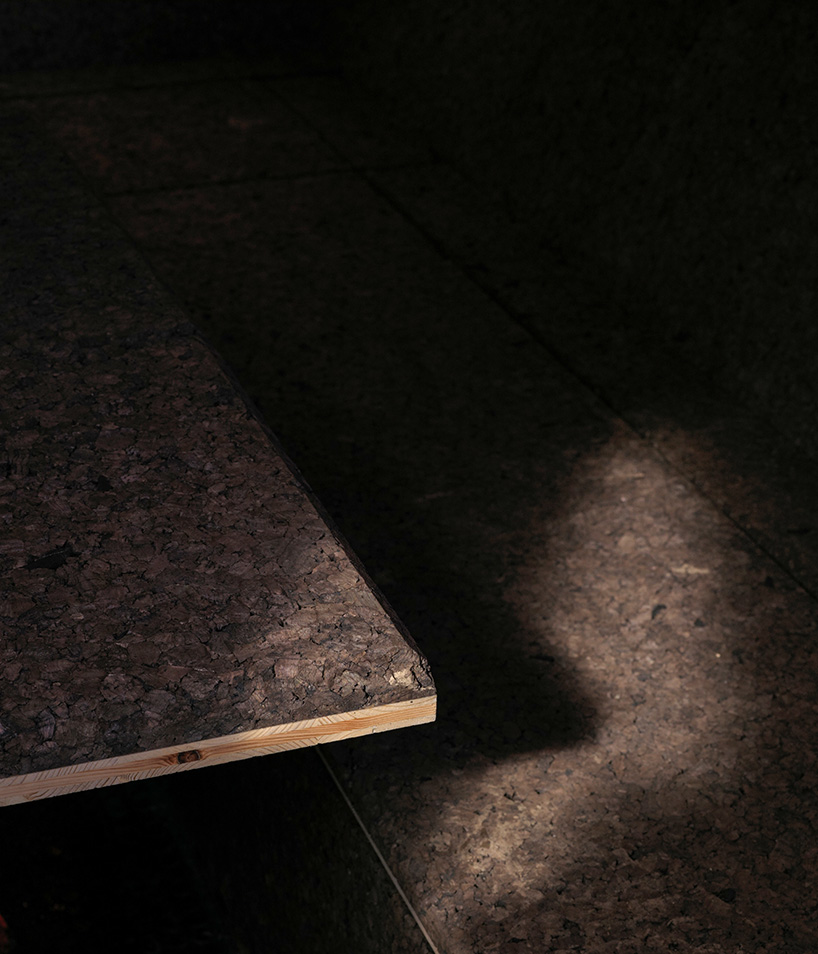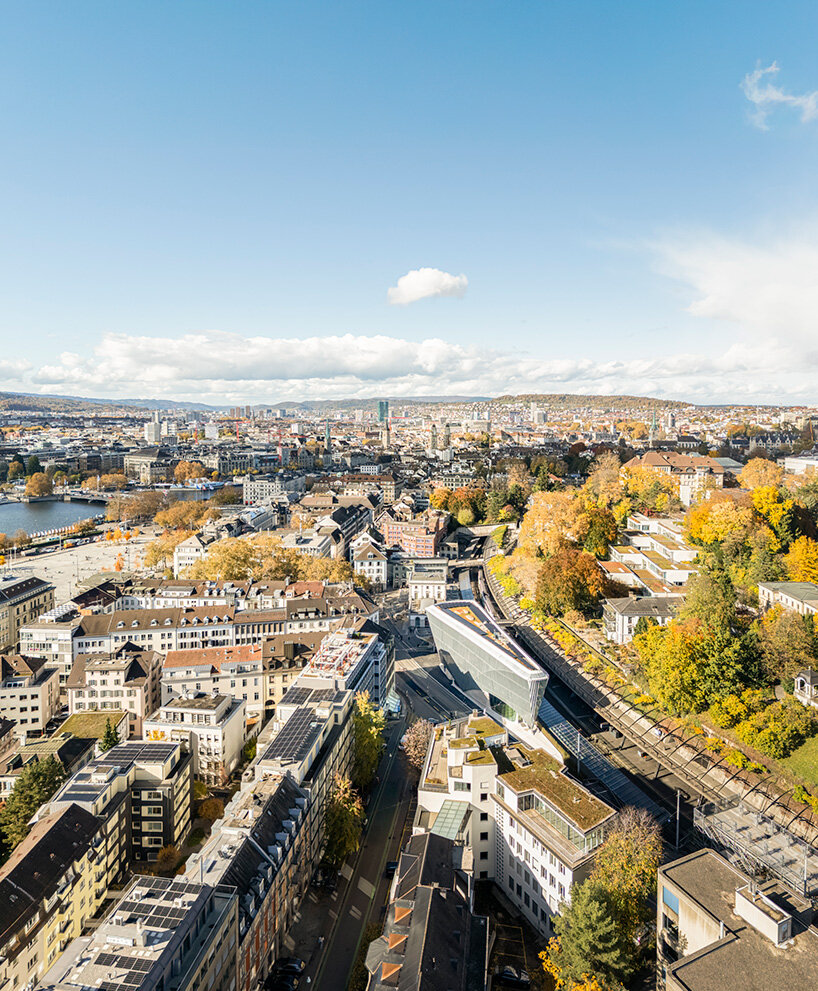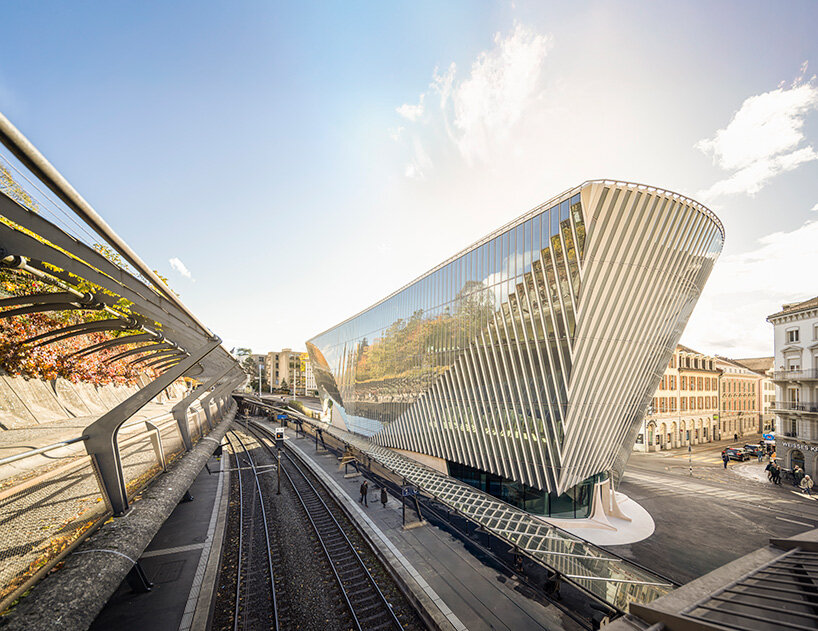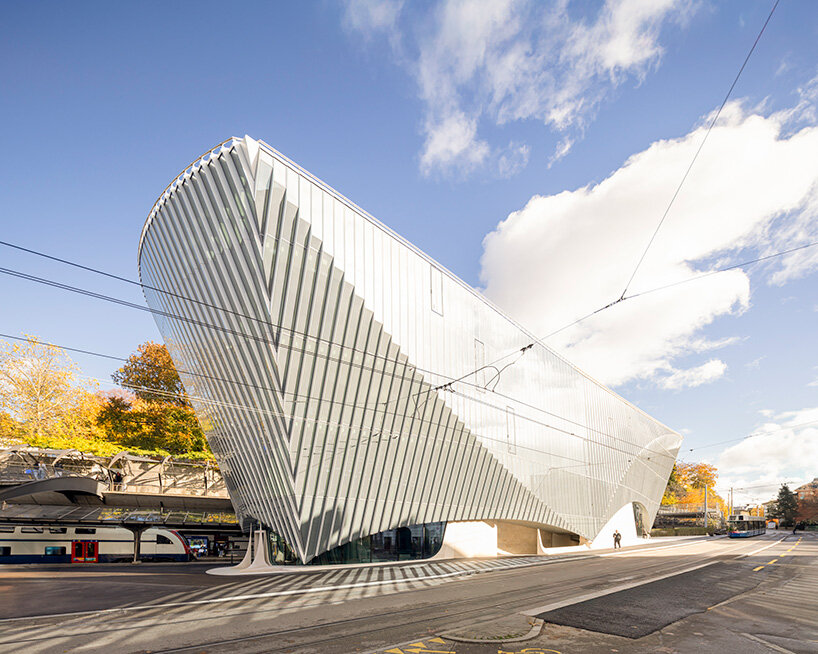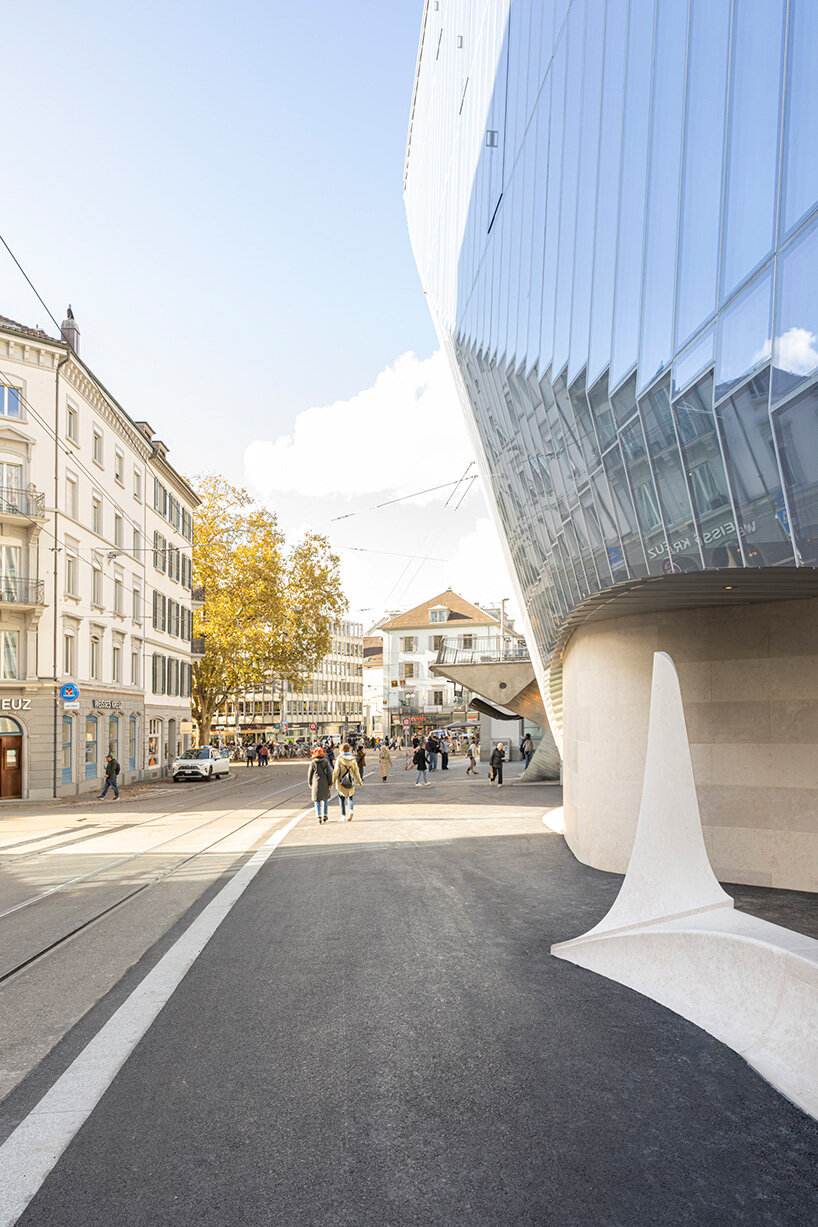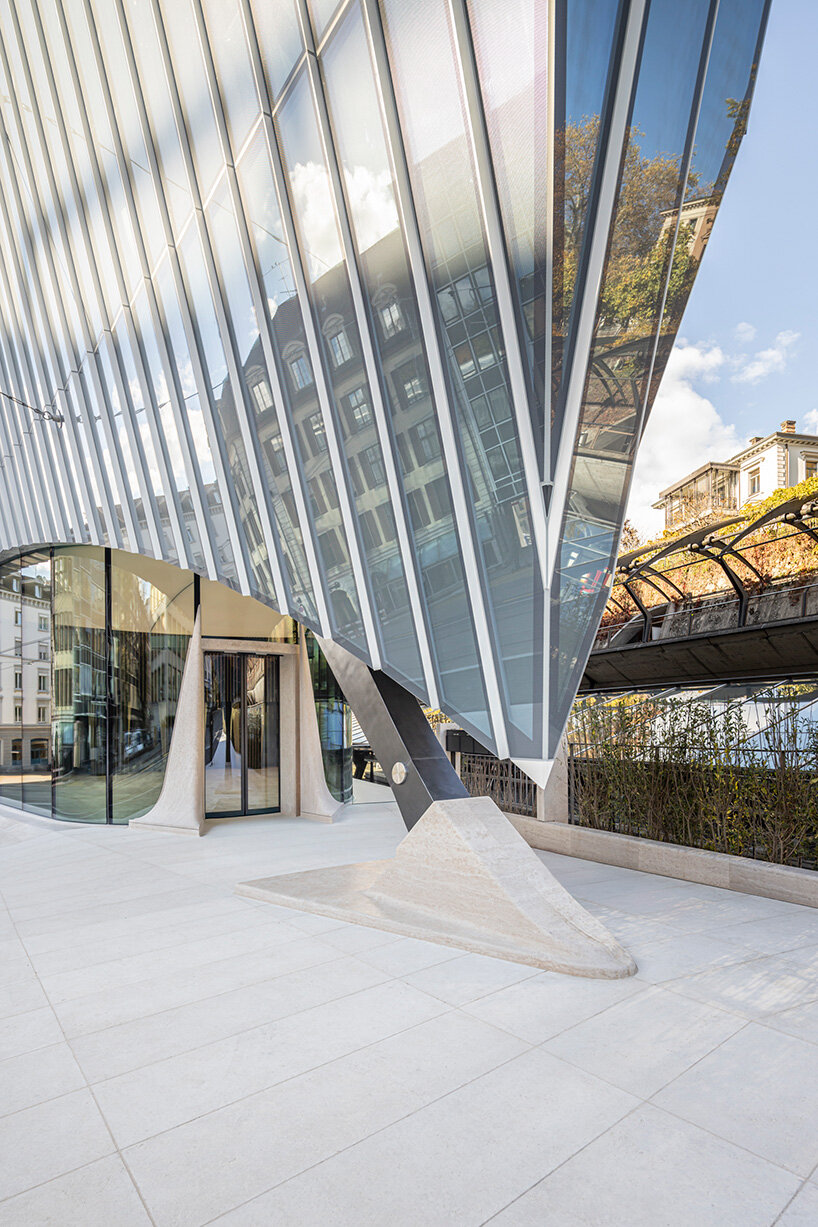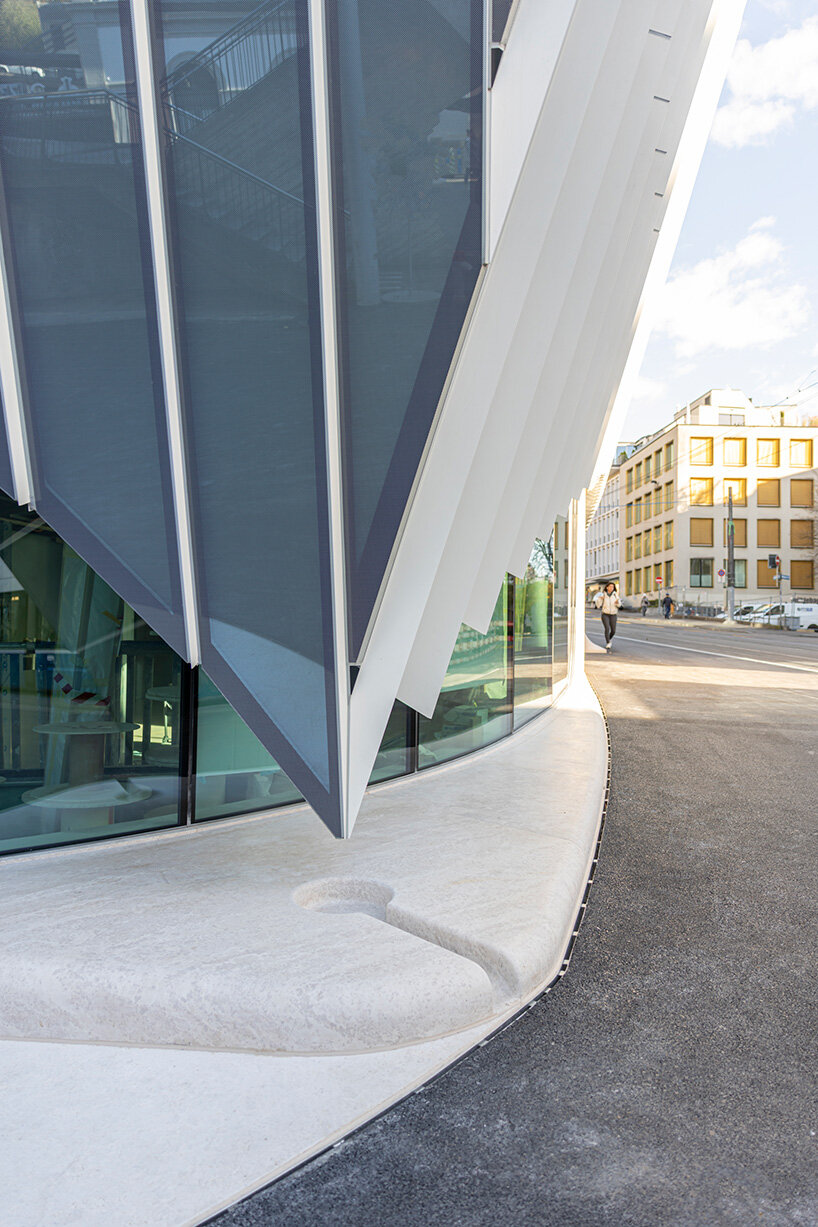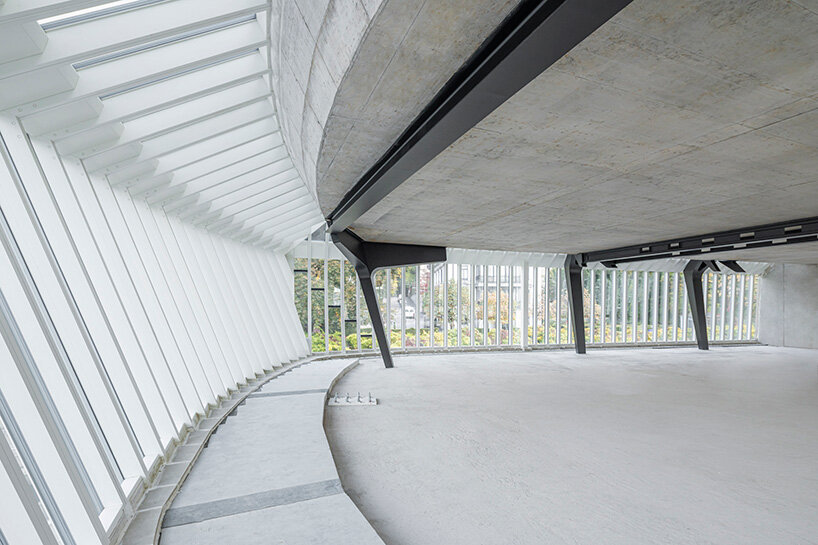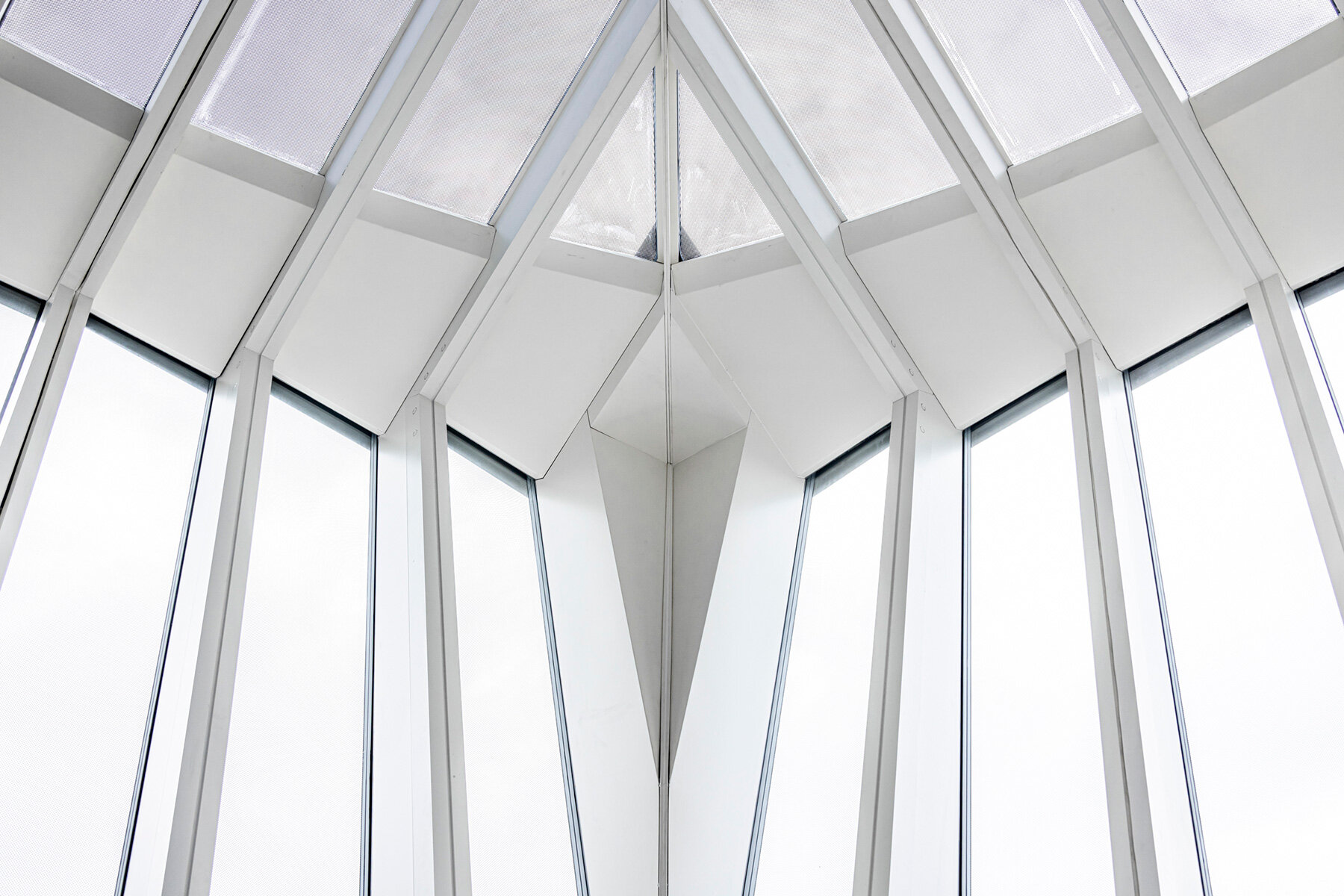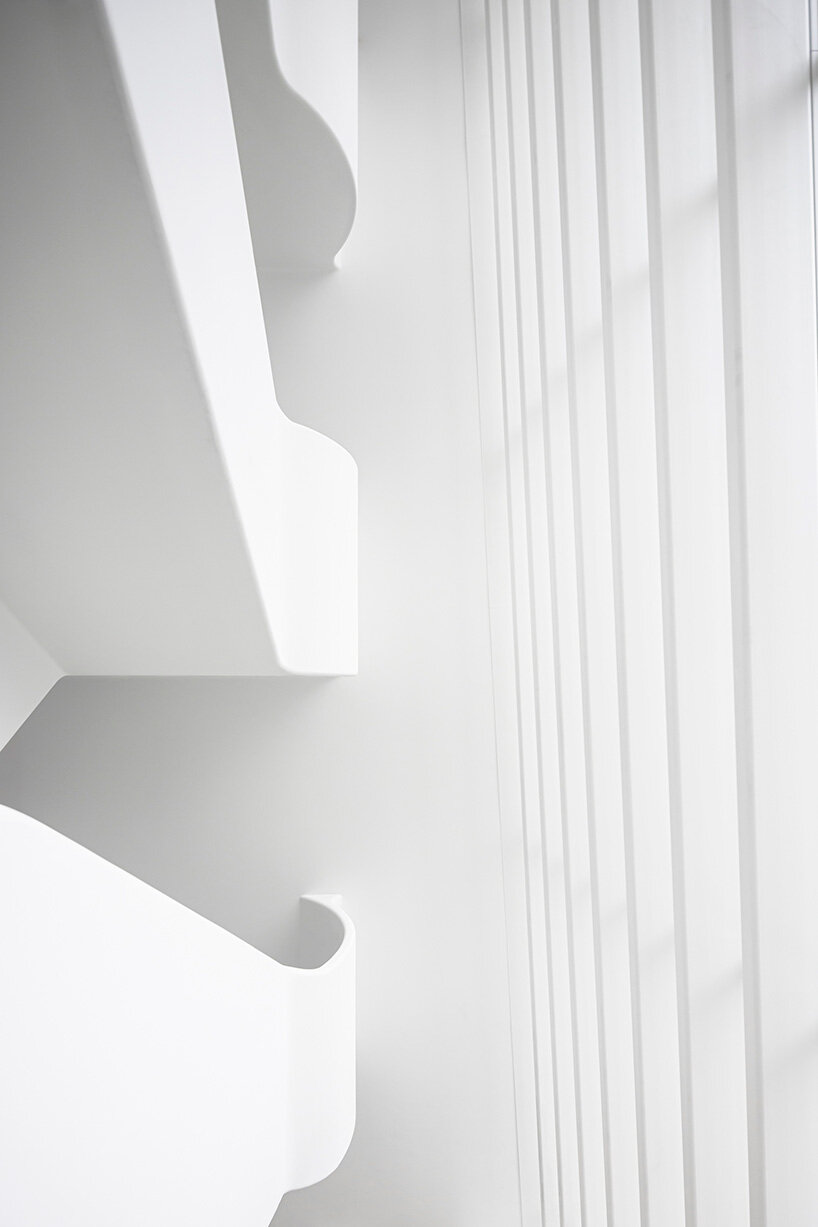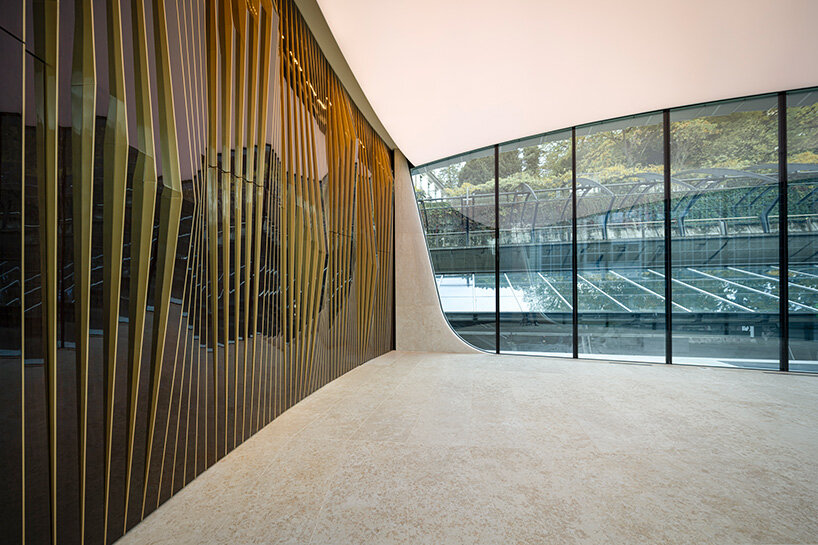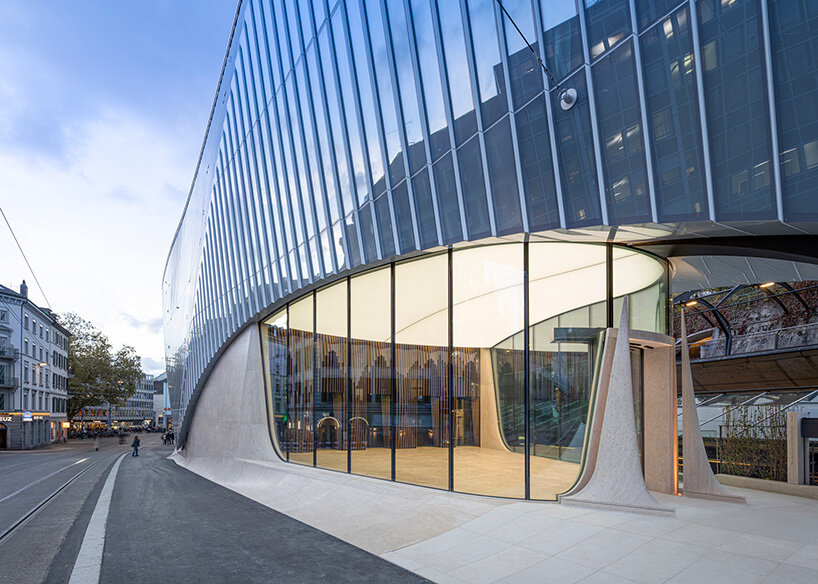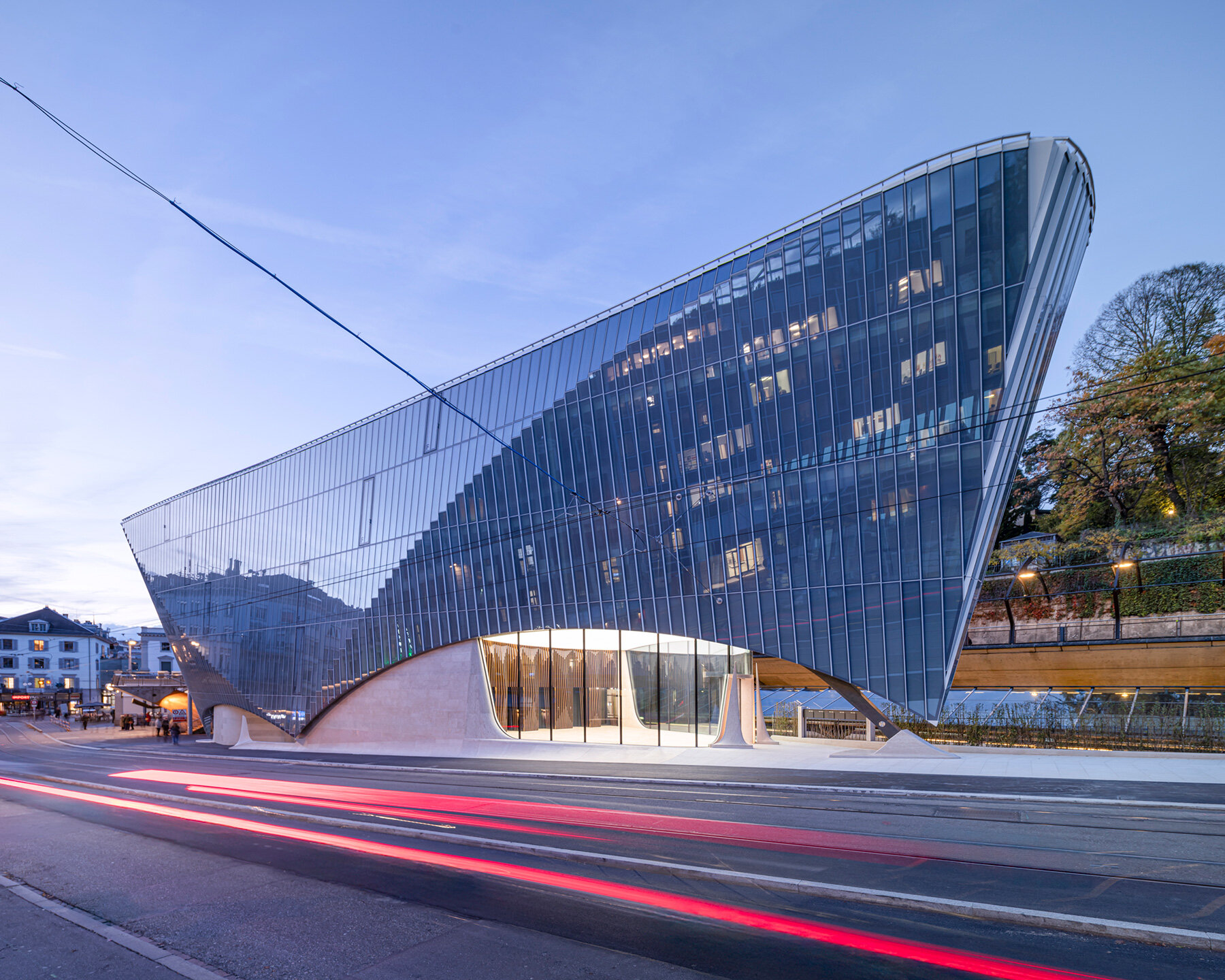vertical cuts split monolithic ‘cube within a cube’ suburban residence in cyprus
Kyriakos Miltiadou sculpts an Introverted Concrete home
Situated near a sparse forest with intriguing vistas over the suburbs of Nicosia, Cyprus, stands AER, a suburban residence by Studio Kyriakos Miltiadou. Rather than adopting a conventional residential typology that opens outward to offer uninterrupted views of the surrounding landscape, it rises as an austere, introverted box.
The architectural proposal constitutes a systematic elaboration of the primordial dwelling-box and its reinterpretation in relation to contemporary modes of domestic living. The design begins with a three-dimensional grid, a lattice of points forming the rudimentary outline of a box with a 14×17-meter plan. Fragments of the natural landscape gradually infiltrate the box, triggering its progressive fragmentation. Through this systematic process of erosion, a complex prismatic composition of voids and solids emerges. Four vertical concrete walls, six meters high, wrap around the fragmented box, holding its split volumes within a coherent yet fluid whole. Carved with vertical cuts, these walls act as mediators between the inside and outside world: filtering, protecting, framing, and revealing, fostering in this way a dialectical relationship with the forest, the city, and the sky.
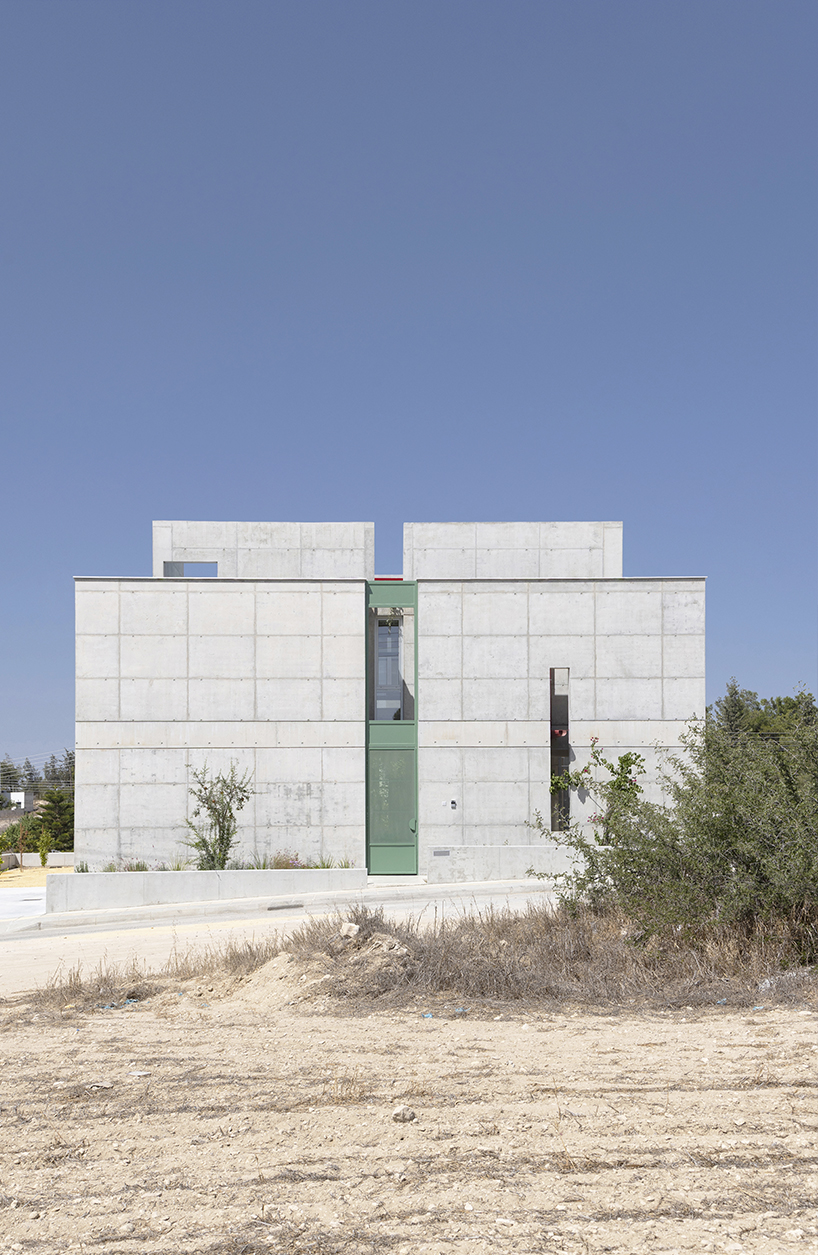
the residence rises within its surroundings as an austere, sculpted box
AER Residence unfolds in ‘A Cube Within a Cube’ formation
Acting as a ‘collector,’ the box absorbs both tangible and intangible layers of its surroundings, reinterpreting them in relation to the family’s domestic life. What emerges morphologically is at first unfamiliar and deeply primal: a cube nested within a cube. An austere yet perforated shell is encased within another, standing as an archaic stone within its context. A vertical slit on the east facade serves as the entrance, marking arrival and emphasizing the transition from the exterior to the inner world of the building, designed by Studio Kyriakos Miltiadou. The first encounter is with an open yet sheltered garden, a central space that becomes a key compositional element around which the family’s daily life unfolds. This focal point is part of a continuous network of outdoor spaces, passages, and courts that surround the built mass of the house vertically and horizontally. Planted with local vegetation and filled with abundant natural light from above, they form a unique inner ‘garden’ nestled within the broader landscape ‘garden.’
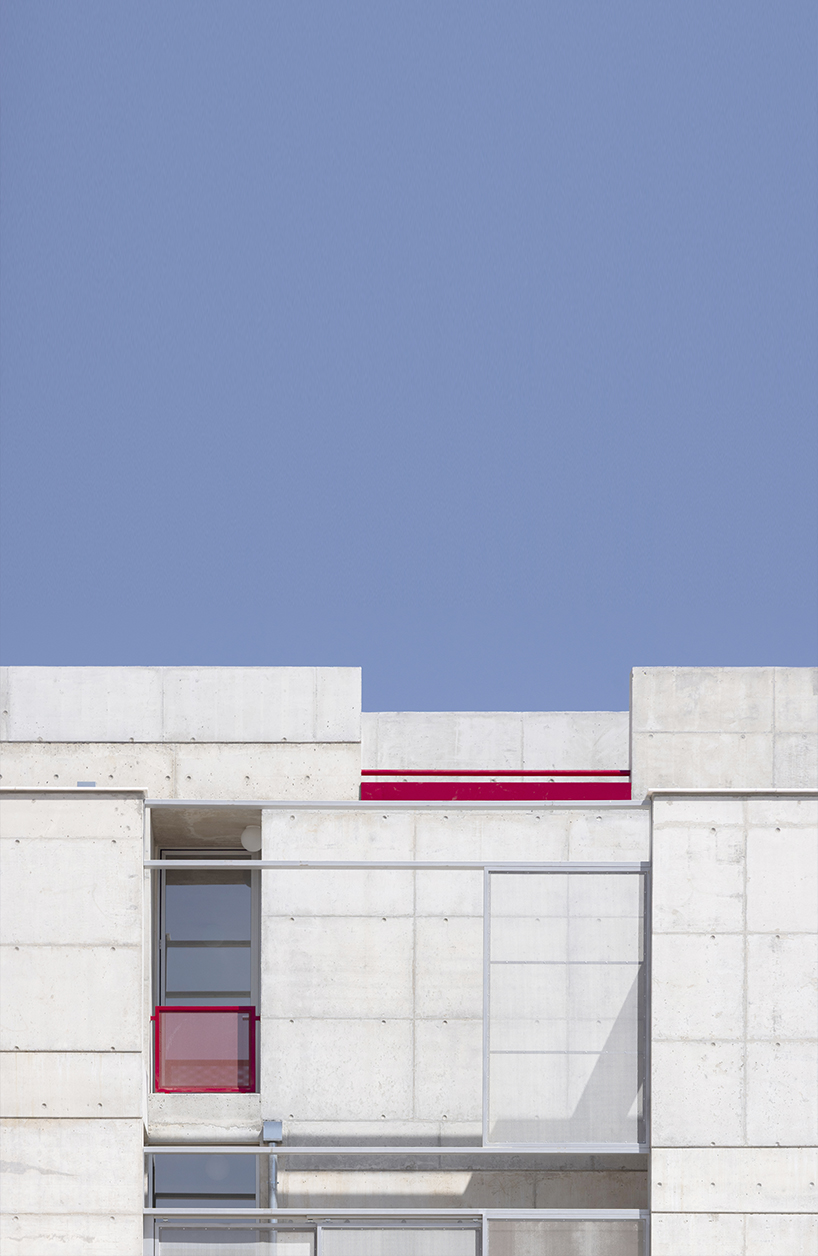
the building is monolithic, constructed entirely from exposed concrete
AER’s design Blurs Boundaries Between Living and Landscape
Internally, the house is organized across four distinct levels, always in relation to the surrounding network of outdoor spaces. On the ground floor lie the public areas, the kitchen, dining room, and living space. On the upper level, the private rooms unfold across two different planes. Intermediate spaces are used to provide a fluid arrangement between the functional units of the house, softening the boundaries between the public and private spheres of domestic life. A hidden external staircase leads to a small rooftop terrace above. Here, the roof dissolves into the intense Mediterranean blue of the sky, while much of its surface is planted with natural vegetation, fostering unique conditions for the creation of a microclimate. A horizontal aperture at the far end frames a captivating view of the forest and the distant mountain ranges.
The structural and architectural design operates as a unified entity. The building is monolithic, constructed entirely from exposed concrete. The sculpted surfaces envelop human activity, transforming it into a dwelling space. Over time, vegetation climbs and gradually softens the monolithic presence of the structure. The interplay between human activity, architecture, and nature becomes continuous and inseparable.

carved with vertical cuts, the concrete walls frame and highlight intriguing views of the surrounding environment
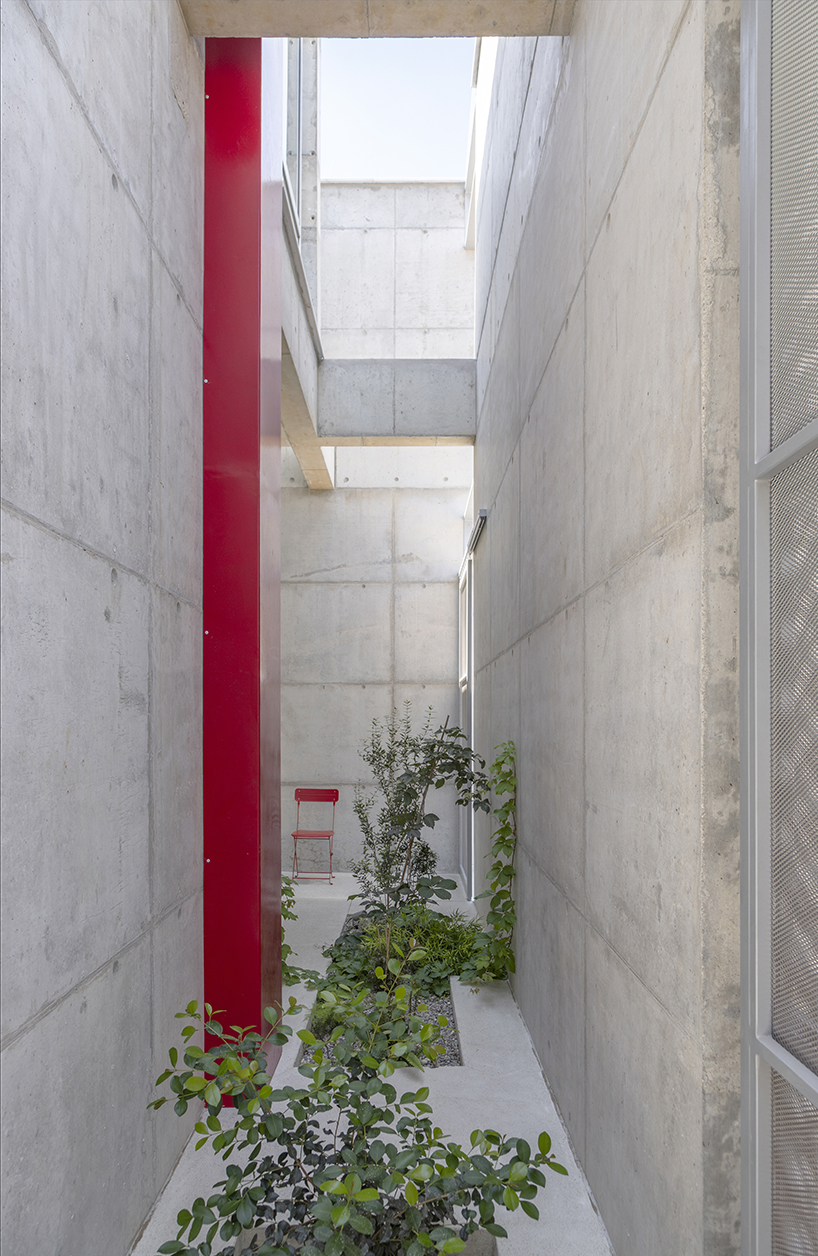
a continuous network of outdoor spaces and pathways surrounds the interior spaces of the building
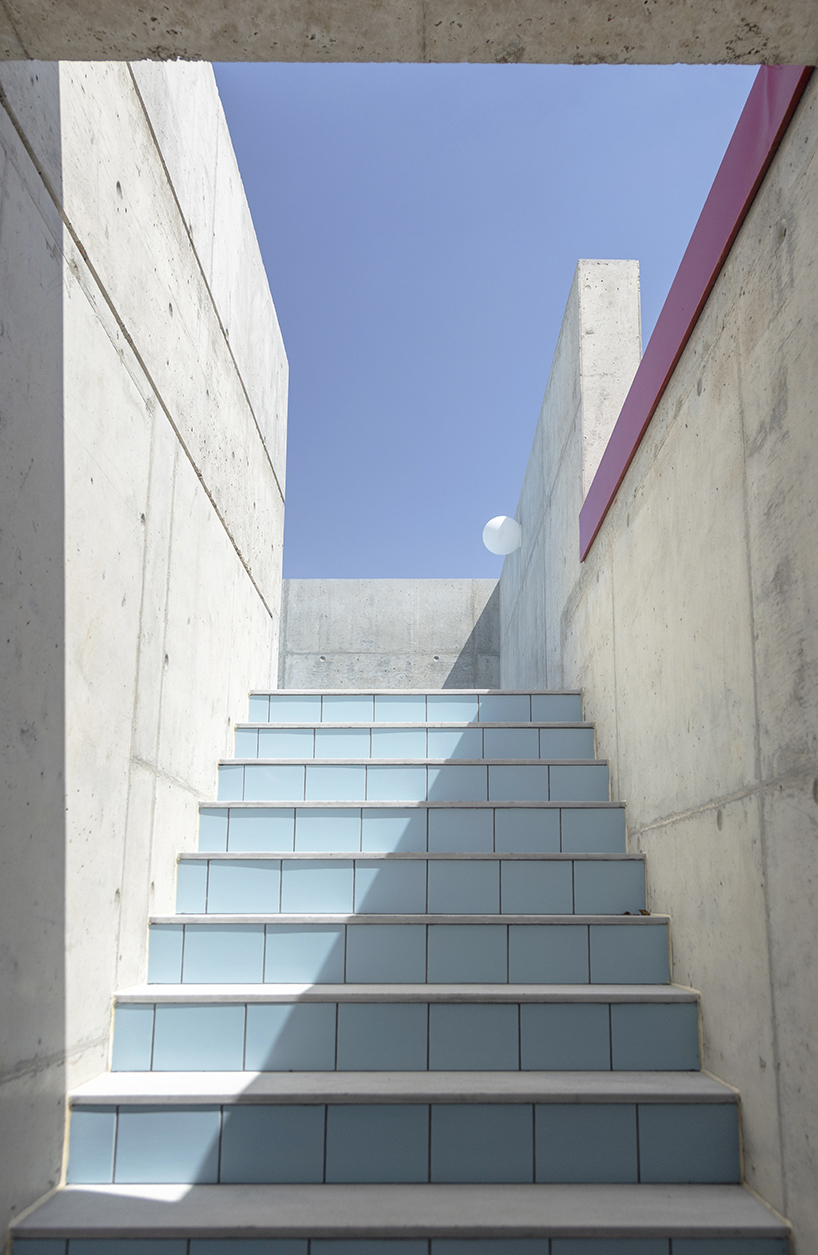
an external staircase leads to a hidden rooftop terrace
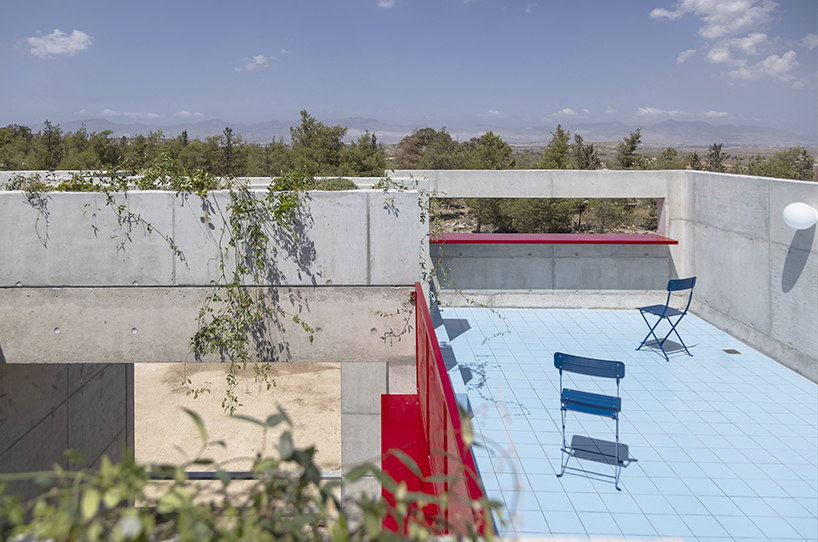
part of the building’s roof is planted with native vegetation, enhancing its bioclimatic performance
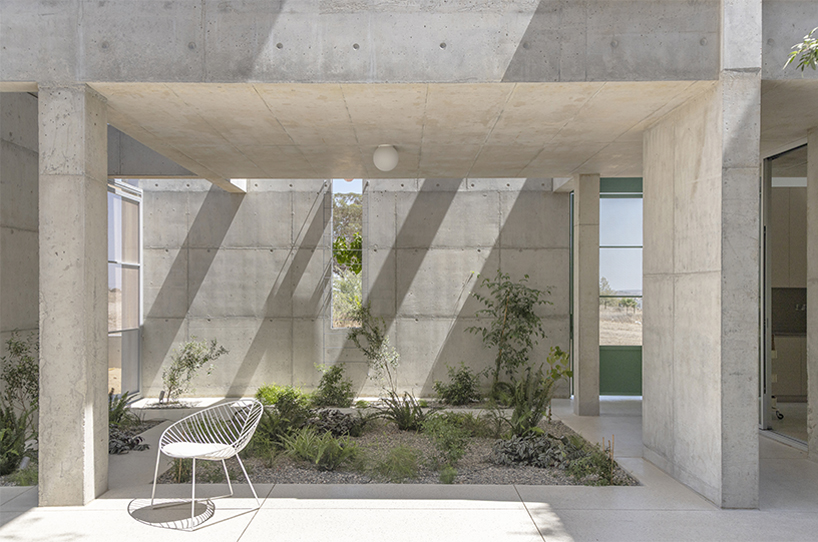
an inner garden is planted with local vegetation and filled with abundant natural light from above
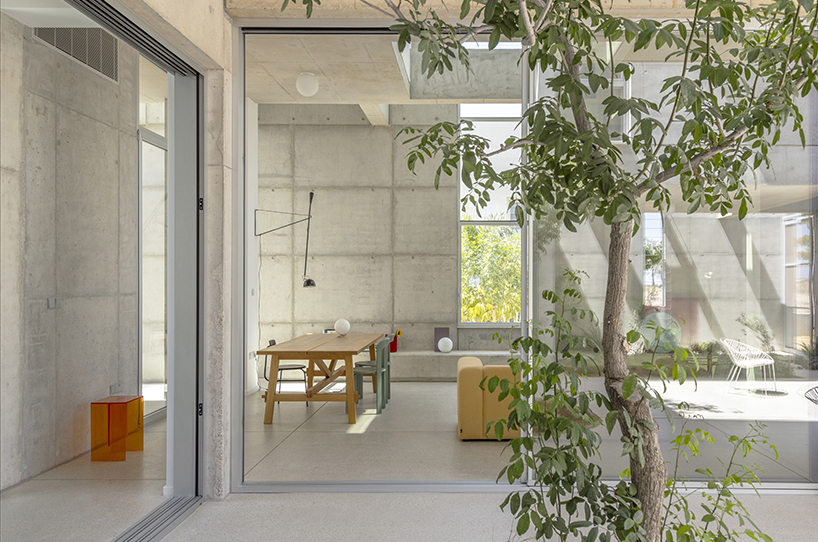
all functional areas of the residence are organized around a central atrium space
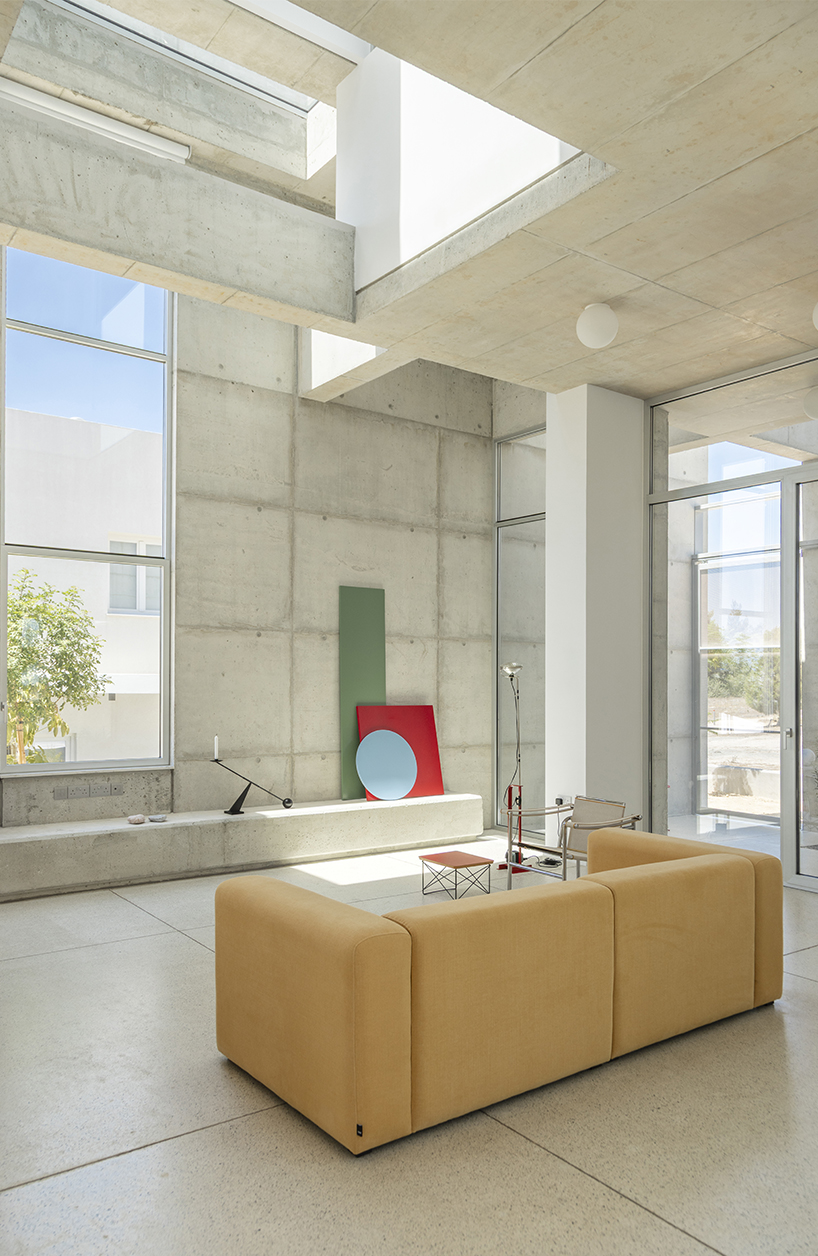
the interior spaces are organized on four distinct levels, in relation to the enclosed outdoor garden
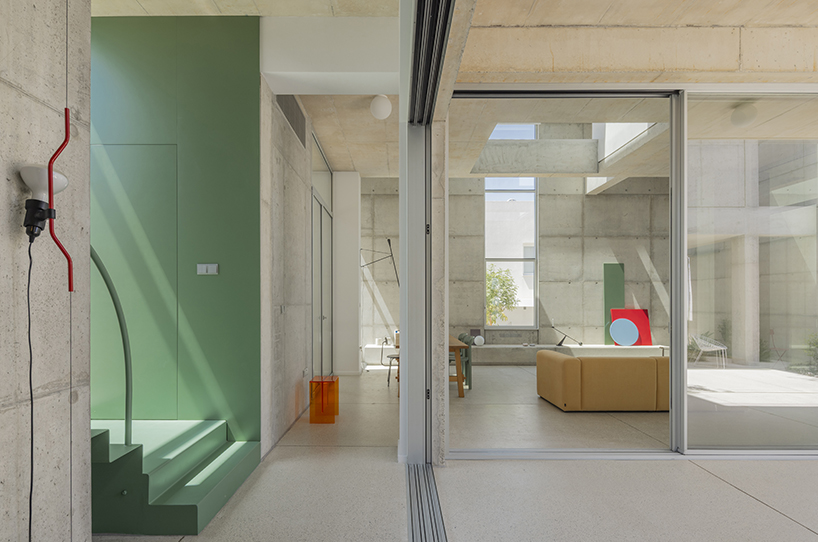
large sliding glass doors blur the boundaries between the interior and exterior spaces of the residence
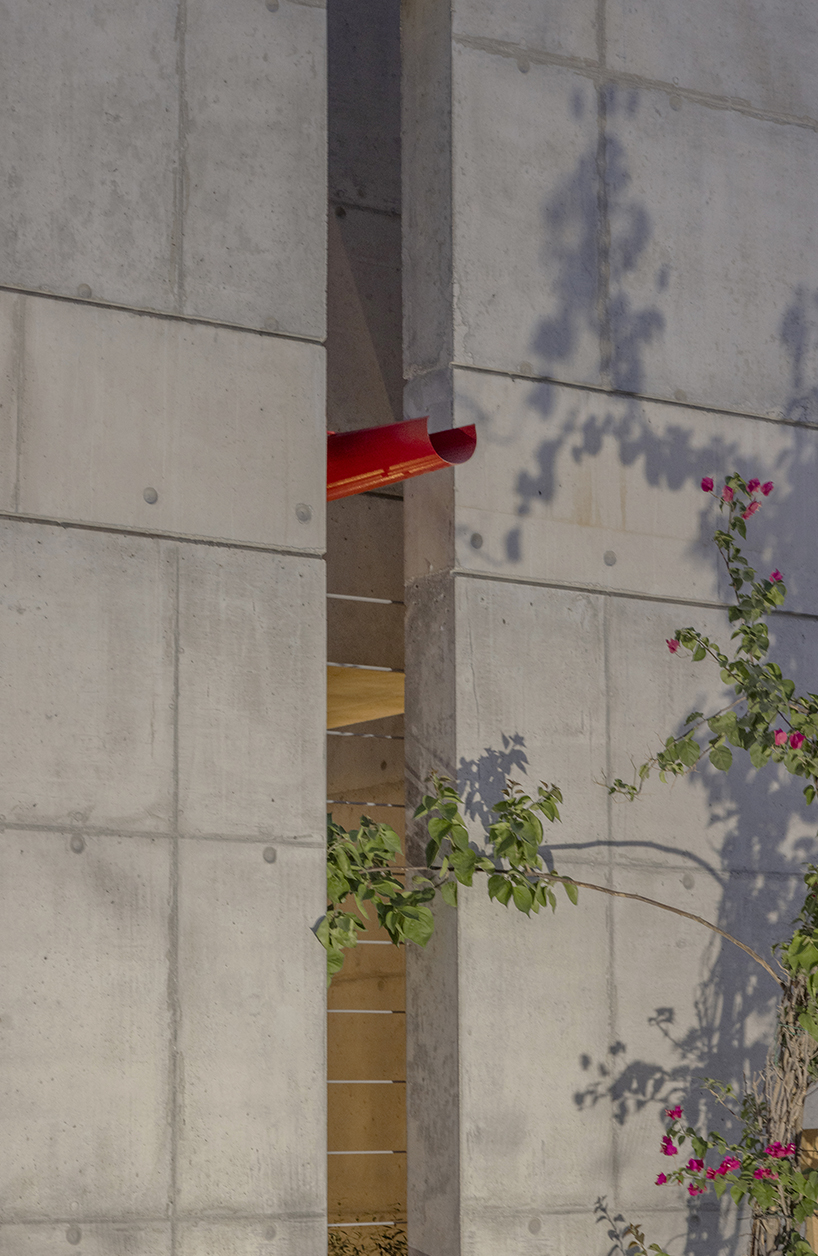
acting as a ‘collector,’ the box absorbs both tangible and intangible layers of its surroundings
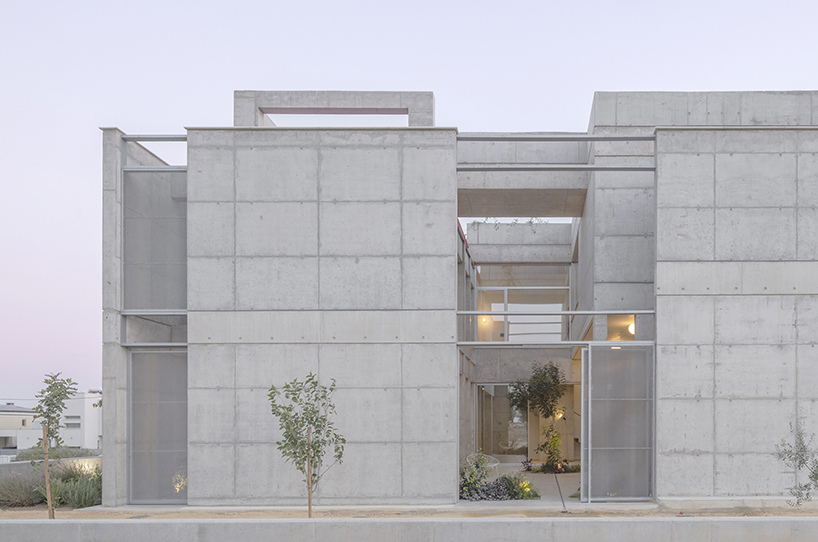
four vertical walls surround the main volume of the building, creating a dialogue between the interior and exterior
project info:
name: AER
architect: Kyriakos Miltiadou | @kyriakos.miltiadou
design team: Kyriakos Miltiadou, Maria Tsoupani
location: Nicosia, Cyprus
photographer: Maria Efthymiou – Creative Photo Room | @creativephotoroom
drone photographer: Symeon Symeou
designboom has received this project from our DIY submissions feature, where we welcome our readers to submit their own work for publication. see more project submissions from our readers here.
edited by: christina vergopoulou | designboom
The post vertical cuts split monolithic ‘cube within a cube’ suburban residence in cyprus appeared first on designboom | architecture & design magazine.
